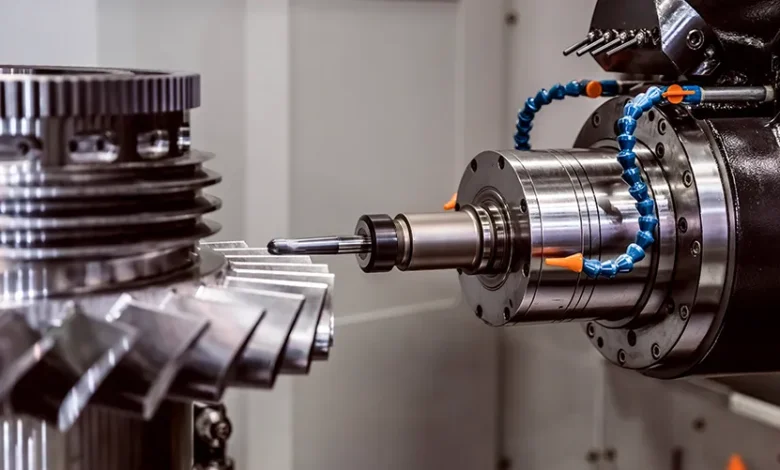The World of Machinists: Masters of Precision and Craft

Machining is one of the oldest trades, blending technical skill with creativity to create precision tools, parts, and machines that drive various industries. Machinists, the experts in this field, work behind the scenes, crafting essential components that keep everything from transportation to manufacturing running smoothly. In this article, we’ll dive into the fascinating world of machinists, exploring their roles, tools, skills, and the future of this crucial profession. Whether you’re interested in becoming a machinist or simply curious about the trade, you’ll find that this career path is more exciting and essential than you might have imagined.
1. Who Are Machinists?
Machinists are skilled tradespeople who use a variety of machine tools to make precise metal parts, devices, and instruments. Their work involves crafting components for everything from cars and airplanes to medical devices and industrial machinery. Some machinists create new parts based on blueprints or CAD (Computer-Aided Design) models, while others focus on repairing or modifying existing parts. Their primary goal is to achieve a high degree of precision, often working with tolerances as small as a thousandth of an inch.
Machinists play a vital role in industries like manufacturing, aerospace, automotive, and defense. Every nut, bolt, and mechanical part has likely passed through a machinist’s hands or tools at some point, making them indispensable to the global economy.
Types of Machinists
Machining encompasses several specialties, and machinists may focus on one or more of these:
- Manual Machinists: Skilled in operating manual machines like lathes, mills, and grinders without computer assistance.
- CNC Machinists: Specialists in computer numerical control (CNC) machines, programming complex movements to automate the machining process.
- Tool and Die Makers: Experts in creating tools, dies, and molds for mass production, often working with high-strength materials.
- Prototype Machinists: Focused on creating single or custom parts, often used in research and development for new product designs.
Each of these roles requires unique skills, but all machinists share a dedication to precision, problem-solving, and an eye for detail.
2. The History of Machining: From Hand Tools to CNC

The roots of machining can be traced back thousands of years, starting with basic hand tools like chisels and hammers. The trade evolved significantly during the Industrial Revolution, which saw the invention of more complex machines, including the first metal lathes, which could carve intricate shapes with high precision.
The most significant transformation came in the 20th century with the advent of computer numerical control (CNC). CNC machines allowed for automation in machining, using pre-programmed computer software to control the movement of tools. CNC technology has since revolutionized the industry, enabling machinists to produce parts with astonishing accuracy at a much faster rate.
3. The Role of a Machinist Today: Skills and Responsibilities
Modern machinists combine traditional techniques with advanced technology, making their skill set both broad and specialized. Here’s a closer look at the core responsibilities and skills that define today’s machinists.
Reading and Interpreting Blueprints
A machinist’s work often begins with a blueprint or a CAD model. Machinists need to be adept at reading these technical drawings, understanding the dimensions, tolerances, and specifications required. Misinterpreting even a minor detail can lead to an incorrect part, potentially delaying production or compromising quality.
Setting Up Machines
Machinists choose the appropriate tools and machines for each task, including selecting the correct drill bits, cutting tools, and clamping devices. They must also set machine parameters, such as speed and feed rate, which vary based on the material they are working with (e.g., steel, aluminum, or plastic).
Precision Machining and Finishing
Once set up, machinists carefully monitor the machining process, often making adjustments in real-time. Precision is key, and even minor errors can lead to significant issues in the final product. For instance, parts that don’t fit correctly in an assembly can lead to malfunctions or reduced product lifespan.
Quality Control and Inspection
After machining, parts undergo rigorous inspection to ensure they meet the required standards. This process often involves using specialized measuring tools like calipers, micrometers, and coordinate measuring machines (CMMs). For CNC machinists, this stage may also involve inspecting the programming code to correct any potential errors before production.
4. The Tools of the Trade
Machinists rely on a vast array of tools, each tailored to specific tasks. Let’s take a closer look at some of the essential tools and machines found in a machinist’s workshop.
Manual Machine Tools
- Lathe: Spins the workpiece while a cutting tool shapes it, often used to create cylindrical parts.
- Milling Machine: Removes material by rotating a multi-point cutting tool, ideal for creating flat surfaces and complex shapes.
- Drill Press: Used for drilling precise holes into a workpiece, essential for assembly parts.
- Grinder: Used for fine finishing work, achieving a smooth surface or specific dimensions.
CNC Machines
CNC machines are the backbone of modern machining. They can perform complex operations with minimal human intervention, allowing for faster and more accurate production. Common CNC machines include:
- CNC Lathes: Automatically controls rotation and cutting movements, often used for high-precision parts.
- CNC Mills: Offers multi-axis control for complex geometries, widely used in industries requiring precise shapes and angles.
- CNC Routers: Specializes in cutting, carving, and drilling, primarily for materials like wood and plastic but also used in some metal applications.
Measuring Instruments
Accuracy is paramount in machining, and machinists use various measuring tools to verify their work, including:
- Calipers: Measures dimensions to the thousandths of an inch.
- Micrometers: Provides precise measurements, often used for thickness and outer diameter.
- Coordinate Measuring Machine (CMM): Utilizes sensors to measure complex parts in 3D space, often essential in industries like aerospace.
5. The Path to Becoming a Machinist
Becoming a machinist typically involves a combination of formal education, on-the-job training, and certifications. Here’s an overview of the common pathways.
Education and Training
Many machinists start with a high school diploma, often with coursework in mathematics, physics, and engineering principles. Some continue their education in vocational schools or community colleges, where they can earn a certificate or associate degree in machining technology or manufacturing.
Apprenticeships are another popular path, providing hands-on experience under the guidance of experienced machinists. Apprenticeships typically last 3-4 years and combine practical skills with classroom instruction.
Certifications and Skill Development
While not always required, certifications can boost a machinist’s job prospects. For example:
- National Institute for Metalworking Skills (NIMS): Offers certifications in various machining skills, such as CNC programming and milling.
- Certified Manufacturing Technician (CMT): Recognizes expertise in manufacturing processes and technology.
6. Challenges and Rewards of a Career in Machining
A career in machining offers both challenges and rewards. On the one hand, machinists work in environments that demand high levels of accuracy, problem-solving, and a strong commitment to quality. Working with heavy machinery and sharp tools also involves some physical risks, making safety precautions essential.
However, the rewards are equally compelling. Machinists often find satisfaction in seeing their work contribute to major projects, from cars and airplanes to medical devices and infrastructure. The skills they develop are in high demand, leading to stable career prospects and opportunities for advancement.
Financial Outlook
According to recent data, the average salary for a machinist in the United States ranges from $40,000 to $60,000 annually, depending on experience and location. Specialized CNC machinists or tool and die makers often command higher wages, especially in high-tech industries.
Job Satisfaction
Machinists often report high job satisfaction due to the hands-on nature of their work, the constant learning opportunities, and the sense of accomplishment from creating tangible products. For those who enjoy working with their hands and have a passion for precision, machining can be a deeply fulfilling career.
7. The Future of Machining: Where Technology Meets Tradition
Machining is constantly evolving, with technology playing a larger role in the field than ever before. Here are some of the trends shaping the future of machining.
Automation and Robotics
Automation is increasingly prominent in machining, with robots handling repetitive tasks that once required human labor. This trend allows machinists to focus on more complex, creative work, but it also means machinists need to develop skills in robotics and automation.
3D Printing
Additive manufacturing, or 3D printing, is another technological advance impacting machining. While 3D printing doesn’t replace traditional machining, it offers a complementary method for creating complex prototypes and components, reducing waste and speeding up the design process.
Digital Twin Technology
A digital twin is a virtual replica of a physical part or system, allowing machinists to simulate machining processes and test parts in a virtual environment. This technology helps reduce errors, save material, and improve overall efficiency in production.
8. Machinists in Pop Culture: Unsung Heroes
Machinists often remain out of the spotlight, yet their work plays a crucial role in society. While engineers design, machinists bring those designs to life. From creating intricate parts for medical devices to building components for airplanes, machinists’ impact is felt everywhere, even if it isn’t always recognized.
Conclusion: The Essential Art of Machining
Machining is a craft that combines art, science, and technology. Machinists are the backbone of the manufacturing world, creating the precision parts that keep industries running. As technology continues to advance, machinists adapt, embracing new tools and methods to push the boundaries of what’s possible. For those with a passion for precision, problem-solving, and tangible results, machining offers a rewarding, fulfilling career with a proud tradition and a bright future.



